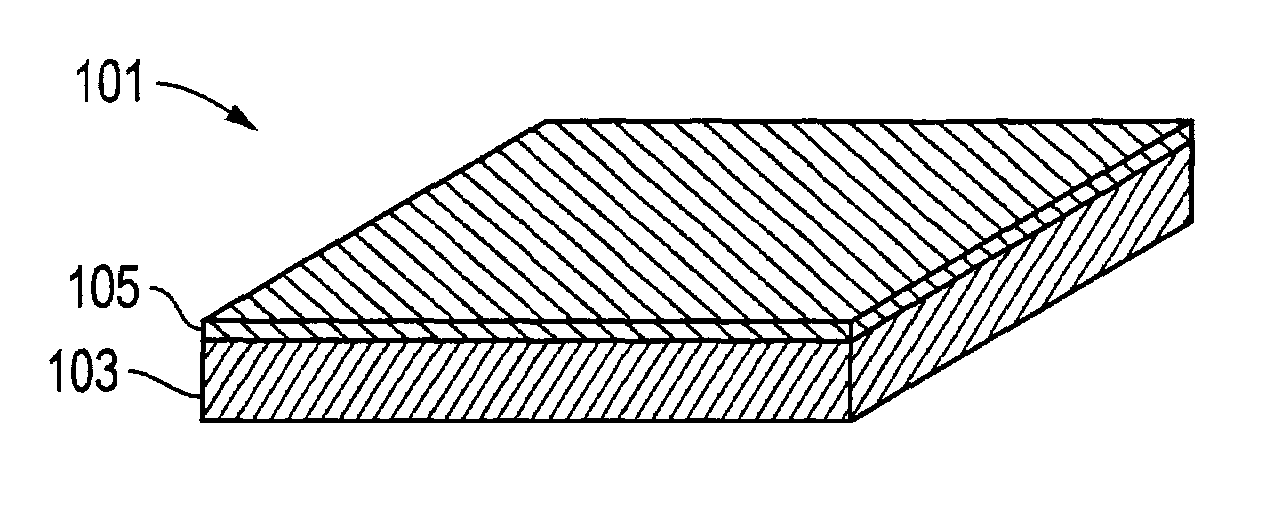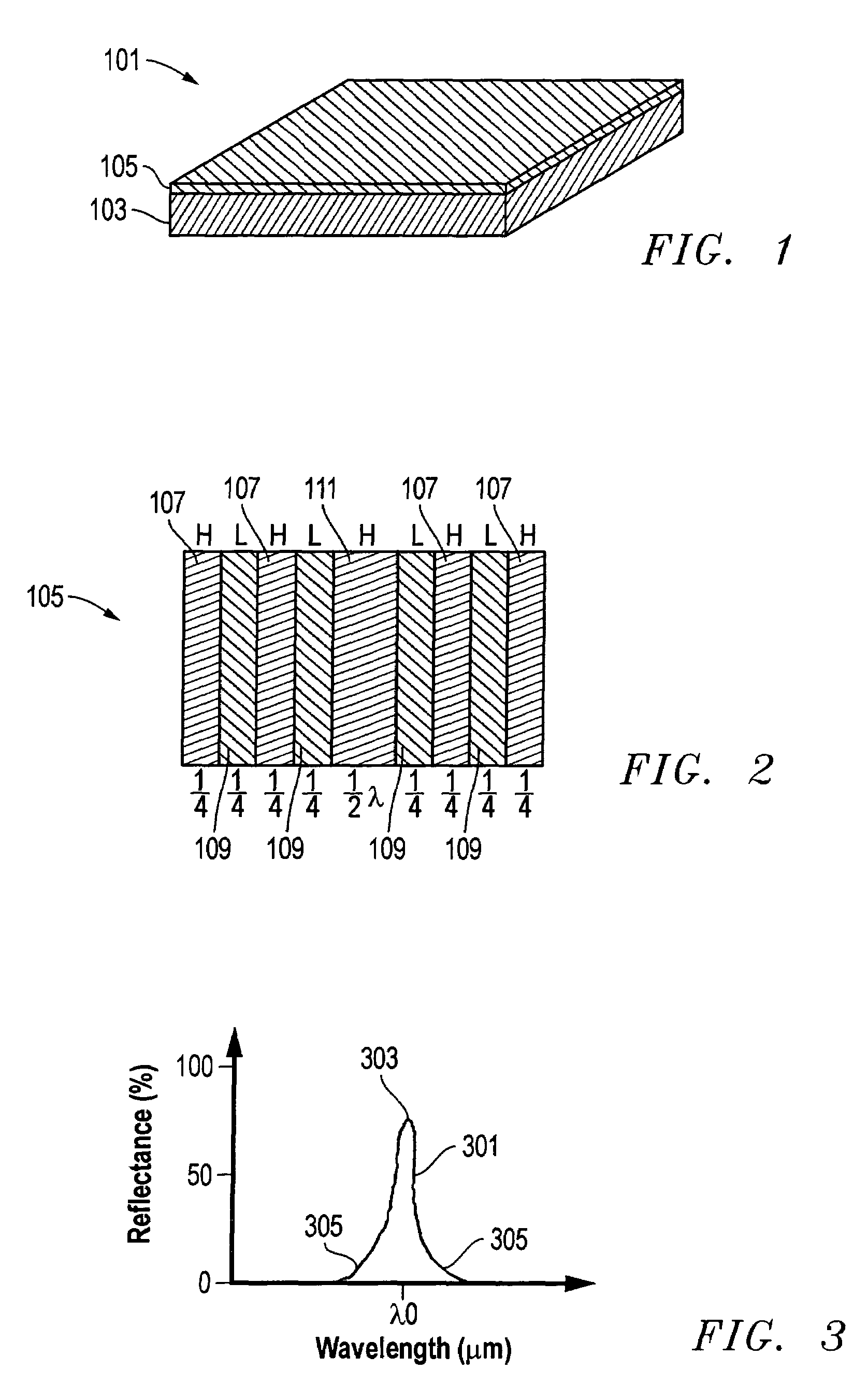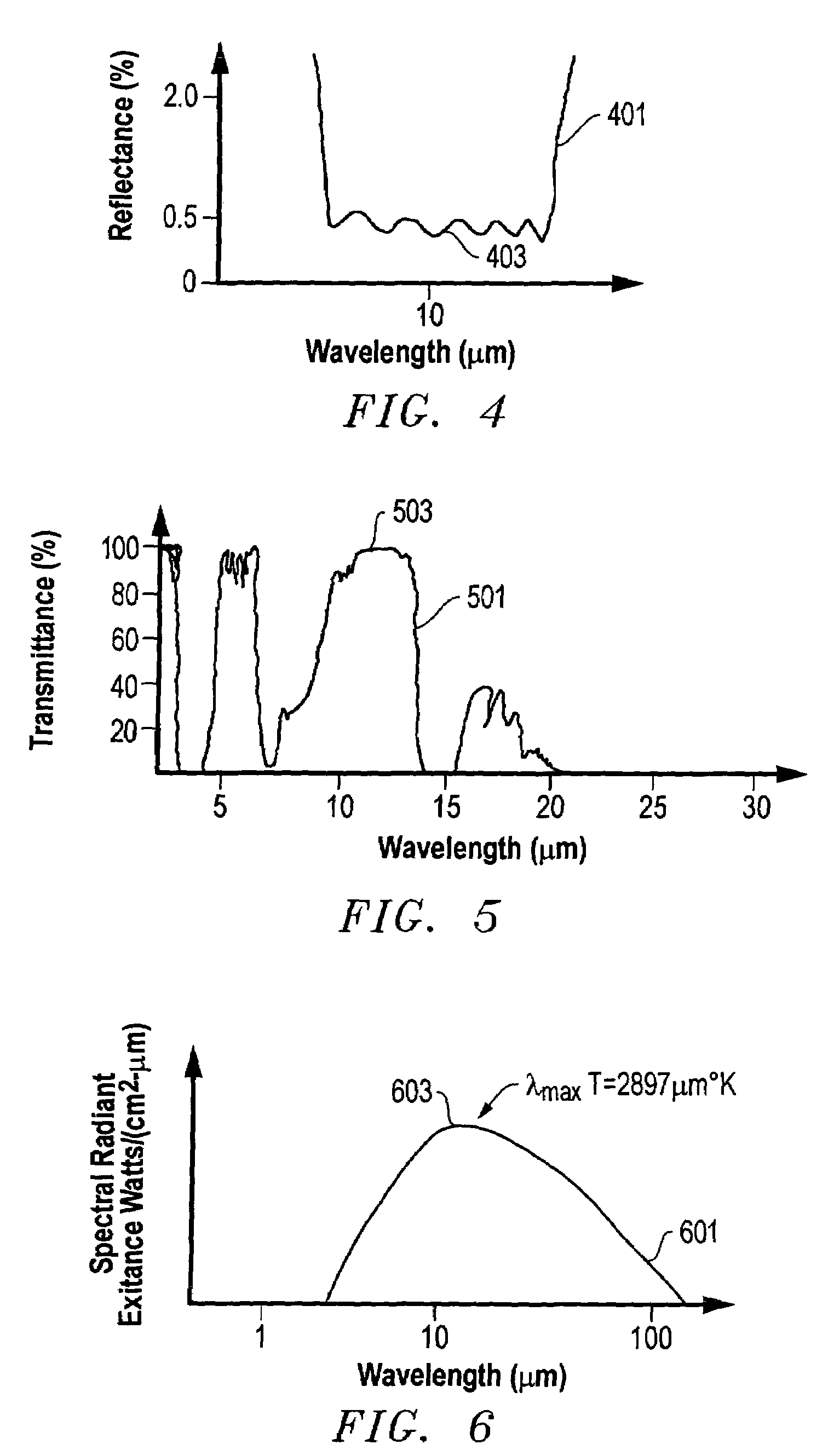System, method, and apparatus for passive, multi-spectral, optical identification of remote objects
a remote object and optical identification technology, applied in the field of object identification systems, can solve problems such as equipment damage, and achieve the effect of easy and rapid identification
- Summary
- Abstract
- Description
- Claims
- Application Information
AI Technical Summary
Benefits of technology
Problems solved by technology
Method used
Image
Examples
Embodiment Construction
[0019]Referring to FIG. 1, one embodiment of a signature 101 constructed in accordance with the present invention is shown. The signature 101 is part of a system that is designed to reflect light, such as infrared light, at very limited wavelengths in order to remotely identify an object.
[0020]Signature 101 comprises a laminate of materials having a substrate 103, such as Mylar, and a thin film 105 mounted on a surface of the substrate 103. As shown in FIGS. 1 and 2, the thin film 105 may comprise a dielectric, vapor-deposited, multi-layer laminate. In the embodiment of FIG. 2, the thin film 105 comprises a plurality of layers 107 having a high index of refraction that are interleaved with a plurality of layers 109 having a low index of refraction. Each of the layers 107, 109 has a thickness of one-quarter wavelength, other than a center, high index layer 111, which has a thickness of one-half wavelength.
[0021]The properties and characteristics of the wavelength bands utilized by th...
PUM
 Login to View More
Login to View More Abstract
Description
Claims
Application Information
 Login to View More
Login to View More - R&D
- Intellectual Property
- Life Sciences
- Materials
- Tech Scout
- Unparalleled Data Quality
- Higher Quality Content
- 60% Fewer Hallucinations
Browse by: Latest US Patents, China's latest patents, Technical Efficacy Thesaurus, Application Domain, Technology Topic, Popular Technical Reports.
© 2025 PatSnap. All rights reserved.Legal|Privacy policy|Modern Slavery Act Transparency Statement|Sitemap|About US| Contact US: help@patsnap.com



